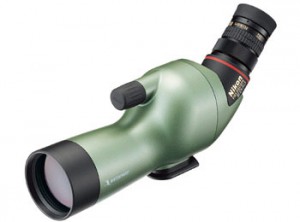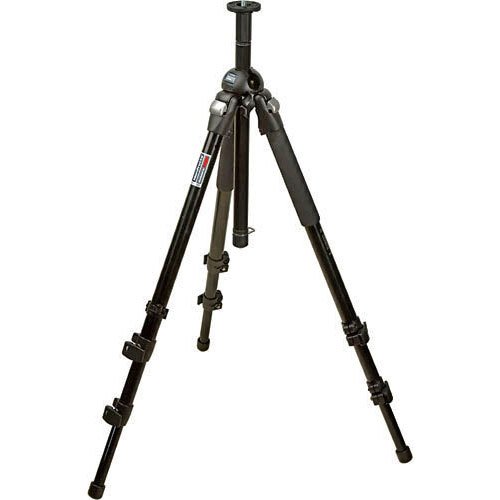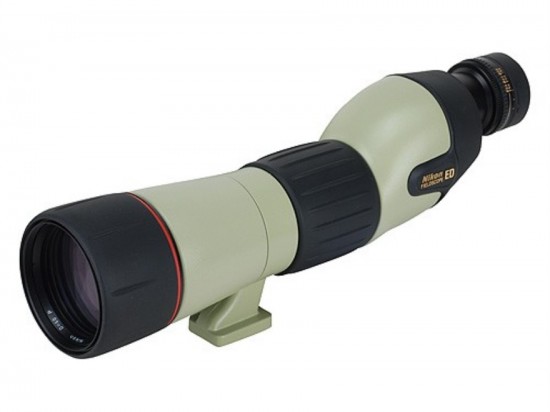Mid-Priced Spotting Scopes
 IT MUST BE TOUGH BEING AN INVESTMENT BANKER or hedge fund manager. So many pricey spotting scopes; so little time. Swarovski, Leica or Kowa? How does the one percent decide? Life is so unfair for them.
IT MUST BE TOUGH BEING AN INVESTMENT BANKER or hedge fund manager. So many pricey spotting scopes; so little time. Swarovski, Leica or Kowa? How does the one percent decide? Life is so unfair for them.
But if you’re among the great-unwashed, your choice among inexpensive spotting scopes is tragically simple. That’s because good, inexpensive scopes are as rare as warblers in winter. It’s a fact of life. Great optics cost great sums. But birders without benefactors do have a few options. So here’s my review of relatively affordable spotting scopes.
First, some background and some caveats. The most important is that I myself haven’t actually evaluated these scopes. It’s not my thing. This post is a collection of other reviews and sources (listed below). Finally, please don’t take this blog post as gospel. I will expand the knowledge assembled here. So if you know more than I do, please leave a comment. I’ll edit as necessary.
Why a Scope?
No serious birder should be without a scope. You simply can’t enjoy shorebirds, seabirds, hawks and even, on occasion, rare songbirds without the power of a scope on a sturdy tripod. If birding is a big part of your life, don’t waffle. Get a scope. And if you want the best possible view out there, yeah, take out a third mortgage, sell your kids into slavery, get a job on Wall Street. You’ll find plenty of people who agree Swarovski, Leica and Kowa constitute the elites, with Nikon and Zeiss in the ballpark. I’m birding and guiding with a Kowa TSN-884, which gives me (and my clients) immeasurable satisfaction and which, for purposes of full disclosure, Kowa has provided me gratis (I’d want one anyway). I’ve owned three Kowa scopes, happily paying for two of them. For any of the elite scopes with zoom eyepieces, expect to pay in the range of $2500-$3000. If you take good care of your scope, it will give you at least 15 years of service. So consider an investment in the best (which comes to roughly $200 per year). Provided that you can keep yourself in food and shelter, you probably won’t regret buying the best views possible.
If you’re here looking for a mid-priced scope, I’m assuming this could be your first scope, or at least your first decent scope. I’ll also assume that you are like the vast majority of birders: sane. Which means you’re not routinely out there in Nor’easters searching for shearwaters and alcids; you’re not trying to find a Red-necked Stint in a peep flock shrouded in heat-haze a mile away. Which means you want a scope to enjoy what’s routinely out there: shorebirds on your local mudflat, ducks on the pond, wintering hawks, the Lapland Longspur among Snow Buntings or even a Snowy Owl this winter.
The crazies among us who bird happily in low or lousy light or during storms tend to go for big scopes because those big objective lenses (77mm or more) gather more precious light and improve the view. Even so, the new class of elite (and expensive) 60-65mm scopes have such great glass that they also perform well in lousy light. But if you mostly bird in decent weather (e.g. sunshine) and aren’t looking into the next county then you’ll do fine with a mid-priced scope. Before I get to them, I’ll mention four other decisions:
- Eyepieces – Once you choose the scope body, you must also choose an eyepiece (and often pay separately for it). I normally recommend against zoom eyepieces unless you’re buying an elite scope. But some of the zoom eyepieces for mid-priced scopes (particularly on Nikons) do indeed perform well. On lower-priced scopes consider fixed 20x or 32x wide-angle eyepieces instead.
- Glass – Note that some manufacturers produce two models of the same scope – a standard model and a model with higher-quality glass. It’s sort of like Johnnie Walker Red and Johnnie Walker Black – both whiskies, but one a more precious and enjoyable blend. Expect to pay several hundred dollars more for the higher-end glass. (As for the whisky, I drink the cheap stuff.)
- Angled or Straight – Many scopes (of either glass) come in two designs. In the angled version (the Nikon pictured above) you tilt your head forward slightly to reach the eyepiece. It’s great for birders of varying heights who share a scope. It tends to be easier to use for birds very high. And it means you don’t have to raise the scope on the tripod’s center tube as high (which causes instability) in order to look through it. One disadvantage is that the eyepiece may collect more rain or snow. Straight scopes (the Nikon pictured below) are more compact, better for birding from a vehicle, probably cause you less fatigue when using it all day, and, at least for me, easier to line up on a given bird. Straight scopes aren’t as good for seeing birds way up high (like hawks) or for use in astronomy.
- Tripods – Even the best scope will be rendered lousy on an unstable tripod. The inconvenient truth is that once you shell out a bundle on a scope, you must dig deeper for a stable tripod. I’m sorry; there is no way around this. And please recognize that wobbly tripods abound. I’ll post on tripods in the future. But here are a few generalizations: 1) Don’t buy a tripod with plastic legs. 2) Don’t buy a tripod that uses a hand-crank to raise and lower your scope. 3) Don’t buy a tripod that requires you to raise the center tube more than a foot or so to bring the scope to your eye level. 4) Don’t buy a ballhead for your birding scope. Most of us use Manfrotto tripods with one of the “micro-fluid” heads for smooth panning.
Finally, and importantly, shop and buy locally whenever you can. I know this is tough. Lower prices are a click away. But lower prices from some distant mail-order house aren’t always your best choice. You should touch and look though a scope before you buy it. Ergonomics are critical: locate and feel the focusing knob (including while wearing winter gloves), zoom the eyepiece, use the scope’s sight. At the shop, you’ll benefit from the advice of a local merchant who cares about you and your birding satisfaction. And when you visit that shop, please don’t leave and order your scope online. Keep your dollars as close to home as possible, churning goodness through your local economy. By the way, when you compare scopes at the shop, do so on a cloudy day. In bright sunlight, even lousy scopes can perform well.
I’ll define affordable in the range of $700 to $1500. I recognize this is not affordable to many people. But if you are a birder serious enough for a scope, you probably care enough to buy something that will make you happy. The odd thing about scopes is that there seems to be a class of decent scopes in this price range, then a jump into the land of the rich and famous. I’m unaware of many wonderful scopes in the range of $1500 to $2500. In any event, here’s a list of mid-priced scopes to consider:
Nikon Fieldscope ED50 – This is actually a compact spotting scope with a 50mm objective lens. (It’s pictured at the top of this post.) Most scopes begin with a 60mm lens. But the reviews of this scope are so good that, at $700, it might make a fine first scope for casual birdwatchers. It’s easily packed for travel and lightweight for carrying in the field. The scope usually comes with a 13-30x zoom eyepiece. In the same class, although not quite as highly reviewed, is the Minox MD 50W.
Kowa TSN-600 Series – I have so far found precious few reviews of the two scopes in this series, the TSN-601 (angled body) and the TSN-602 (straight). But Kowa’s reputation for producing fine optics over the years should have folks considering these scopes priced in the $400-$500 range without eyepieces (another $350 or so). I’ll keep searching for reviews.
Pentax PF-65ED – This scope is, well, controversial. The folks at the web site A Better View Desired had good things to say about it: “Pentax has continued its excellent tradition … by producing a real winner.” But Derek Lovitch, who has reviewed optics for Birding magazine and whose opinion I value highly, says this scope is “ridiculously over-rated.” In any event, note that Pentax offers two types of eyepieces: The high-end XW ED series offers the best views and the XF series is for those of you on a tighter budget. I can’t be sure yet on the quality of the zoom eyepieces. This scope seems to be going in the $500-700 range. By the way, Derek also says of mid-priced scopes: “Generally speaking, stick with Nikon and Minox, and avoid Leupold and Vortex in particular.”
The Nikon 60mm Fieldscope III – The Fieldscope may very well be the best bang for your buck in all of Scopedom. Nikon has the reputation and the glass to make it happen. My looks through Fieldscopes over the years have left me happy, shaking my head and wondering why I don’t own one of these. Note that there’s the standard Fieldscope in the range of about $1000 and the ED model (better glass) in the range of $1500-$1700, each with a 20-60x eyepiece.
Alpen 788 and Vortex Viper HD 20-60×80 – These scopes did well in a review conducted for Bird Watchers Digest in 2009. I’ve never been near one. But you can get more from Michael and Diane Porter at Birdwatching.com.
OK, that’s it. That’s all I’ve got. Now for some “crowd-sourcing.” Send me comments and corrections. Be cruel. Let this be a living document.
References
- Derek Lovitch has reviewed optics for Birding magazine and runs the Freeport Wild Bird Supply in Maine with his wife Jeannette. You should go birding in the region and then visit the shop to purchase a scope or other good stuff!
- Better View Desired, once reliable, is no longer being updated. It’s older dispatches mostly covered higher-end gear, but they also liked the Nikon Fieldscope 50ED.
- Birdwatcher’s Digest has a variety of optics reviews, including mid-priced scopes.
- Mid-priced Scopes Roundup for Birdwatcher’s Digest in May of 2009 (also residing on Birdwatching.com).



What a well-researched and valued post you delivered here for the bird watchers! This was incredibly mind-charming and enchanting presentation regarding the mid-priced spotting scopes. I got through the whole details and got some excellent information to pick up into my poor knowledge. The long technical details on why a Scope, Eyepieces, glass, angled or straight, tripods, price ideas, Nikon fleidscope ED50, Kowa TSN-600 Series, Pentax PF-65ED, References were completely admirable. Though I enjoy the amazing performance by Swarovski, it was a good and happy experience for sure.
You’re welcome, Mark. Note that some of the information in that post is dated by now. The scope market is always changing, and I can’t often keep up with it. 🙂
Hi Bryan,
Thanks for giving me the very useful and detailed information. I am searching for scopes and considering the “Vortex Viper HD 20-60×80” for my next trip. Thanks again.